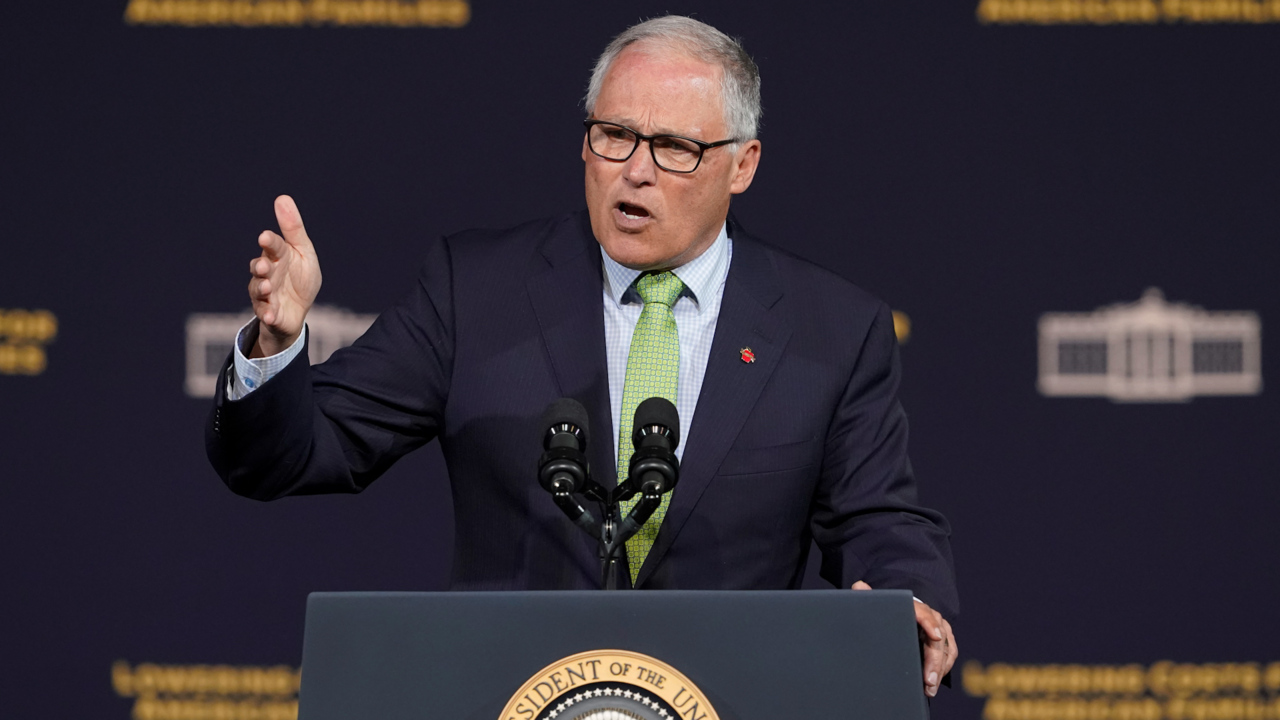Thanks to an ongoing Center for Immigration Studies Freedom of Information Act (FOIA) lawsuit, the public now knows that U.S. Customs and Border Protection (CBP) has approved secretive flights that last year alone ferried hundreds of thousands of inadmissible aliens from foreign airports into some 43 American ones over the past year, all pre-approved on a cell phone app. (See links to prior CIS reports at the end of this post.)
The Biden administration’s legally dubious program to fly inadmissible aliens over the border and directly to U.S. airports has allegedly created law enforcement vulnerabilities too grave to release publicly.
But while large immigrant-receiving cities and media lay blame for the influx on Texas Republican Gov. Greg Abbott’s busing program, CBP has withheld from the Center – and apparently will not disclose – the names of the 43 U.S. airports that have received 320,000 inadmissible aliens from January through December 2023, nor the foreign airports from which they departed. The agency’s lawyers have cited a general “law enforcement exception” without elaborating – until recently – on how releasing airport locations would harm public safety beyond citing “the sensitivity of the information.”
Now, though, CIS’s litigation has yielded a novel and newsworthy answer from the government: The public can’t know the receiving airports because those hundreds of thousands of CBP-authorized arrivals have created such “operational vulnerabilities” at airports that “bad actors” could undermine law enforcement efforts to “secure the United States border” if they knew the volume of CBP One traffic processed at each port of entry.
In short, the Biden administration’s legally dubious program to fly inadmissible aliens over the border and directly to U.S. airports has allegedly created law enforcement vulnerabilities too grave to release publicly, lest “bad actors” take advantage of them to inflict harm on public safety. Or, more specifically, here’s how CBP’s lawyers, in email communications with CIS and summarized in a CIS Joint Status Filing, characterized FOIA’s law enforcement exception (b)(7)(E) in explaining their refusal to release just the domestic U.S. airport locations:
Exception (b)(7)(E) has been applied to the identifying information for air ports of entry, which, if disclosed would reveal information about the relative number of individuals arriving, and thus resources expended at particular airports which would, either standing alone or combined with other information, reveal operational vulnerabilities that could be exploited by bad actors altering their patterns of conduct, adopting new methods of operation, and taking other countermeasures, thereby undermining CBP’s law enforcement efforts to secure the United States borders.
The agency’s attorneys floated a similar argument for withholding the locations of foreign departure airports, adding only that “bad actors” abroad who found out about the “resources expended toward travelers arriving from particular airports” could “extrapolate” from the numbers leaving foreign airports to identify the receiving U.S. airports and then undermine law enforcement’s ability to secure the border (which includes international airports).
The program at the center of the FOIA litigation is perhaps the most enigmatic and least-known of the Biden administration’s uses of the CBP One cell phone scheduling app, even though it is responsible for almost invisibly importing by air 320,000 aliens with no legal right to enter the United States since it got underway in late 2022. It remains part of the administration’s “lawful pathways” strategy, with its stated purpose being to reduce the number of illegal border entries between ports of entry. The countries whose citizens are eligible are Cuba, Haiti, Venezuela, Nicaragua, El Salvador, Guatemala, Honduras, Colombia, and Ecuador.
Under these legally dubious parole programs, aliens who cannot legally enter the country use the CBP One app to apply for travel authorization and temporary humanitarian release from those airports. The parole program allows for two-year periods of legal status during which adults are eligible for work authorization.
The government characterizes these programs as “family reunification programs”.
While seven of the nationalities, excluding Venezuelans and Nicaraguans, can claim eligibility under older family reunification parole programs, all can also just fly in if they can show they have a non-family financial sponsor (which can even be “an organization, business, or other entity”) and meet other requirements, such as owning a valid passport and passing security checks based on biometric information provided through CBP One.
Upon receiving authorization from Washington, they buy air passage to U.S. international airports where CBP personnel process them for release in short order. All are said to be responsible for paying for their own airfare.
They and inadmissible aliens from many dozens of other countries also get this parole benefit at eight U.S.-Mexico land ports of entry. That separate parole program has brought in another 420,000 immigrants from nearly 100 nations from May 2021 through December 2023, according to CIS lawsuit data updated through December 2023. (See links to the 2023 report below, which reflects data through August)
For most of the past year, big-city mayors and state governors have loudly complained about the hundreds of thousands of foreigners showing up in need of housing, food, medical treatment, clothing, and education, placing extraordinary unfunded financial burdens on local populations. Routinely, politicians and major media outlets have laid blame for the influx on Texas Gov. Greg Abbott’s busing program.
But the airport location information would undoubtedly provide a more accurate and complete picture of what is happening, though the administration would not be able to blame the Texas governor for these arrivals.
The redacted records received by CIS show a clear preference for some airports over others, with a dozen unnamed facilities receiving most of the 320,000.
Release by the government of the airport data would serve an important public interest in that it would provide voters and public officials with information to pressure the Biden government to reduce monthly arrival rates into their cities and states.
Colin M. Farnsworth, CIS’s Chief FOIA Counsel, said the Center rejects the government’s explanation about bad actors exploiting “operational vulnerabilities” at airports on grounds that CBP pre-screens and pre-schedules the arrival of CBP One applicants at each port of entry. He said CIS will litigate for a total release of the airport information.
Bad actors already have access to airport travel volumes, through CBP’s own “Traveler and Conveyance Statistics website.” Its statistics for cities whose travails with migrant arrivals are well-publicized show striking airport arrival increases from FY 2022, before the airlift program, through 2023.
Boston airports, for instance, spiked from 2.3 million during FY 2022 to 3.3 million in 2023, the public CBP website shows. Chicago, another migrant hotspot, rose from 6.3 million airport travelers in FY2022 to 7.9 million in 2023. New York City airports spiked from 17.7 million airport arrivals in 2022 to 22.9 million in 2023.
Related reports from Center for Immigration Studies FOIA litigation are based on data provided through August 2023 and the early part of September 2023. CBP has since provided data for all of September, October, November, and December 2023, which are reflected above in this report.
The following are the prior reports reflecting the earlier data:
Related posts:
Views: 0
 RSS Feed
RSS Feed

















 March 6th, 2024
March 6th, 2024  Awake Goy
Awake Goy 






 Posted in
Posted in  Tags:
Tags: 
















